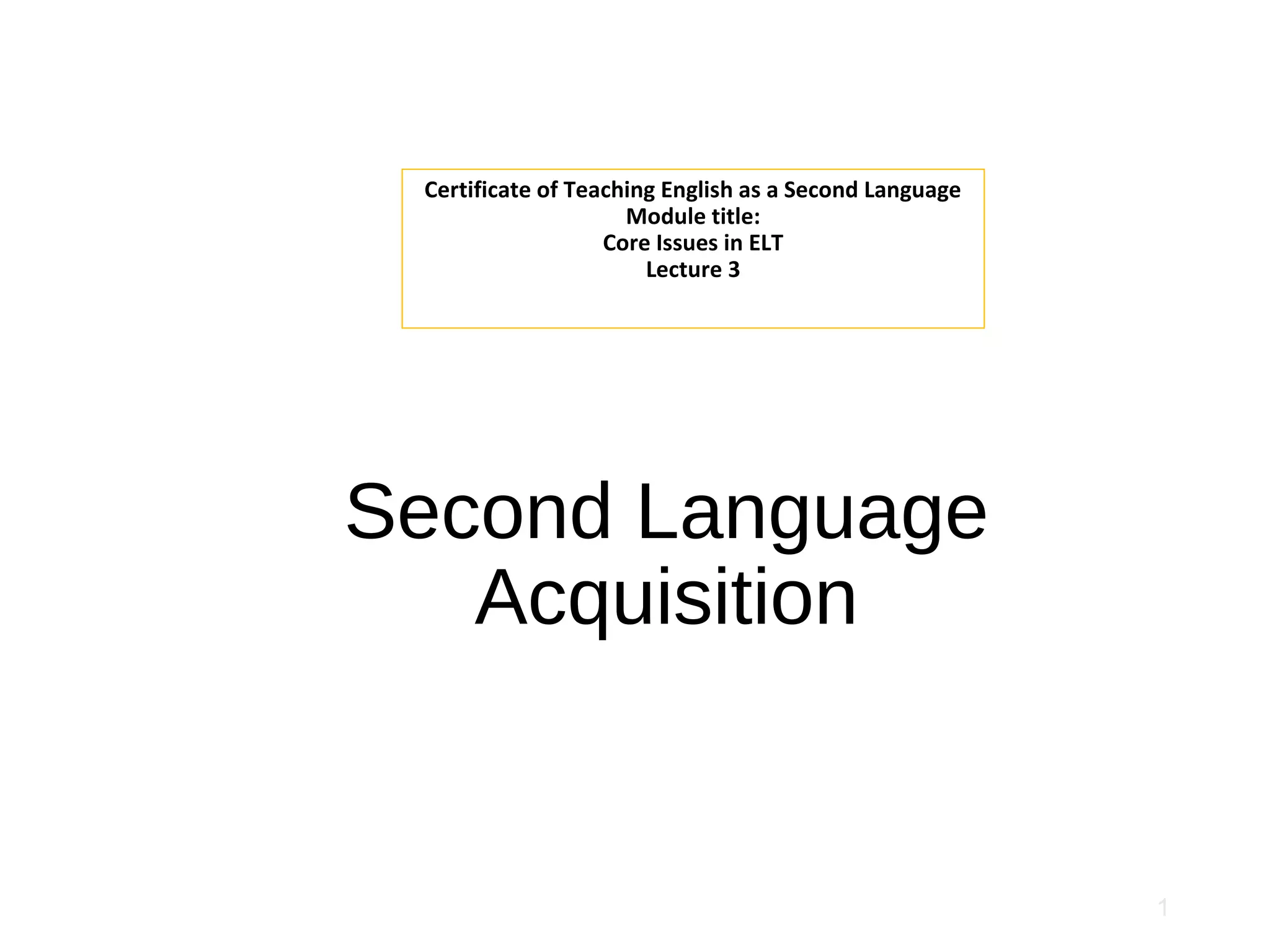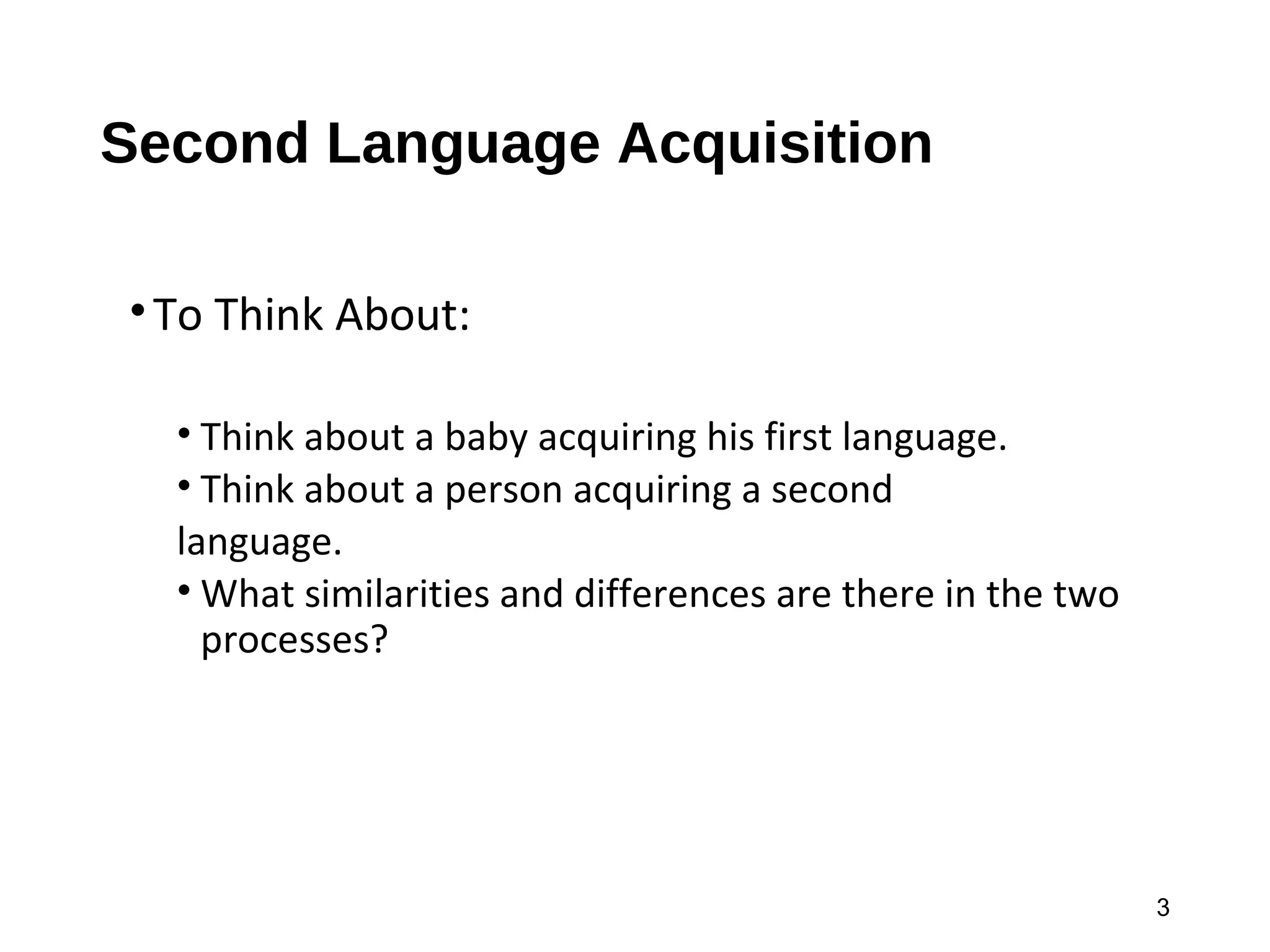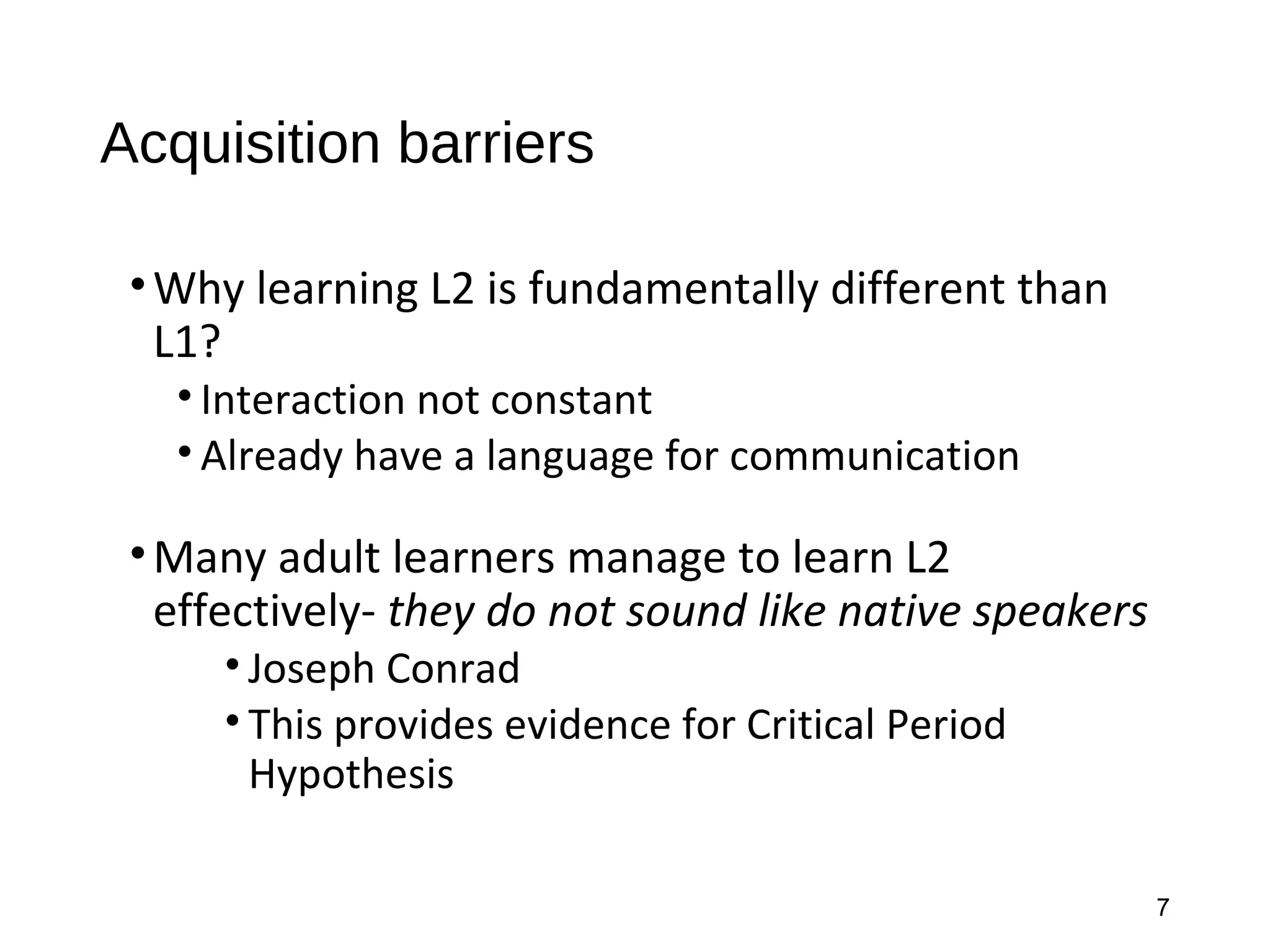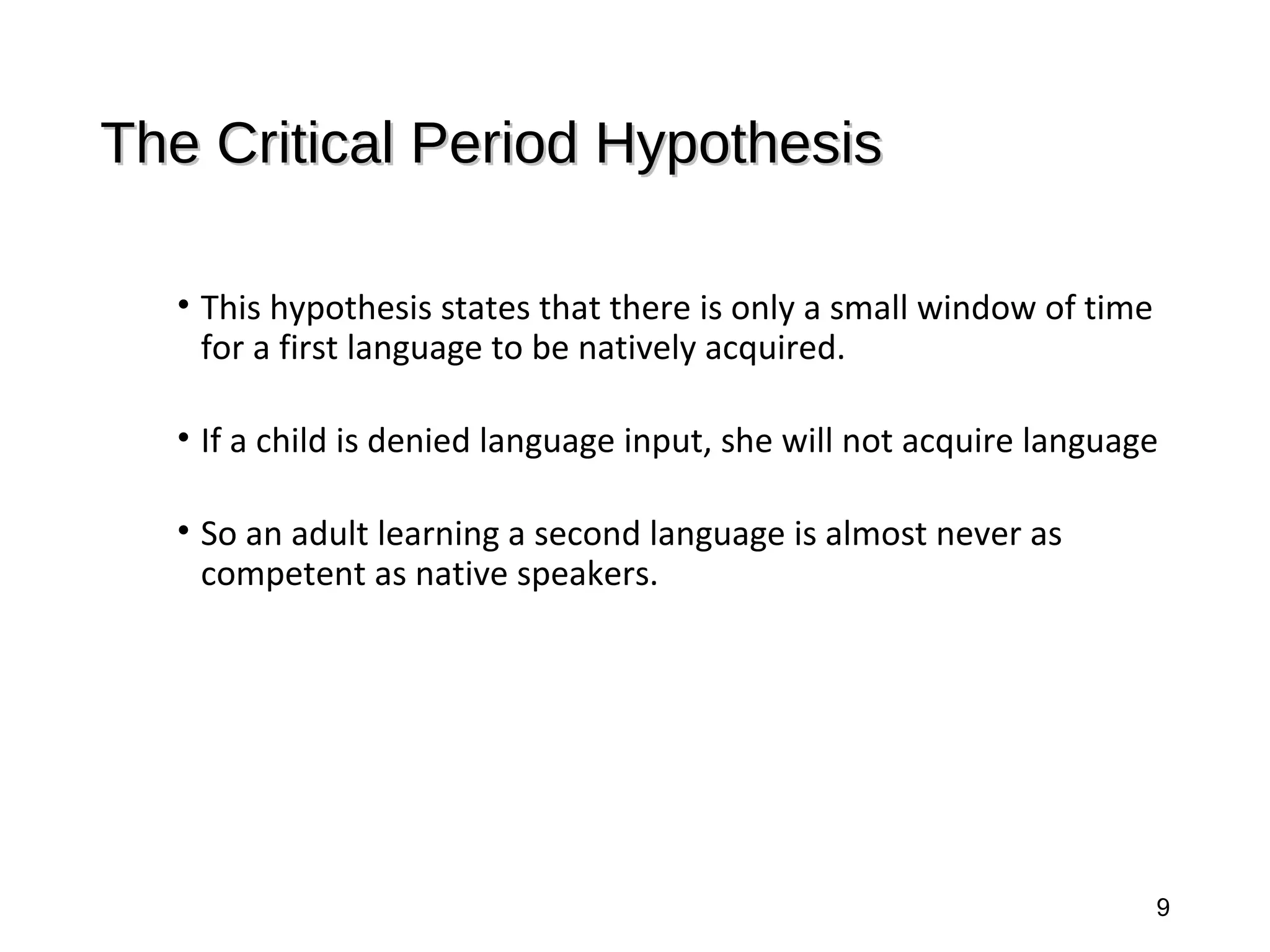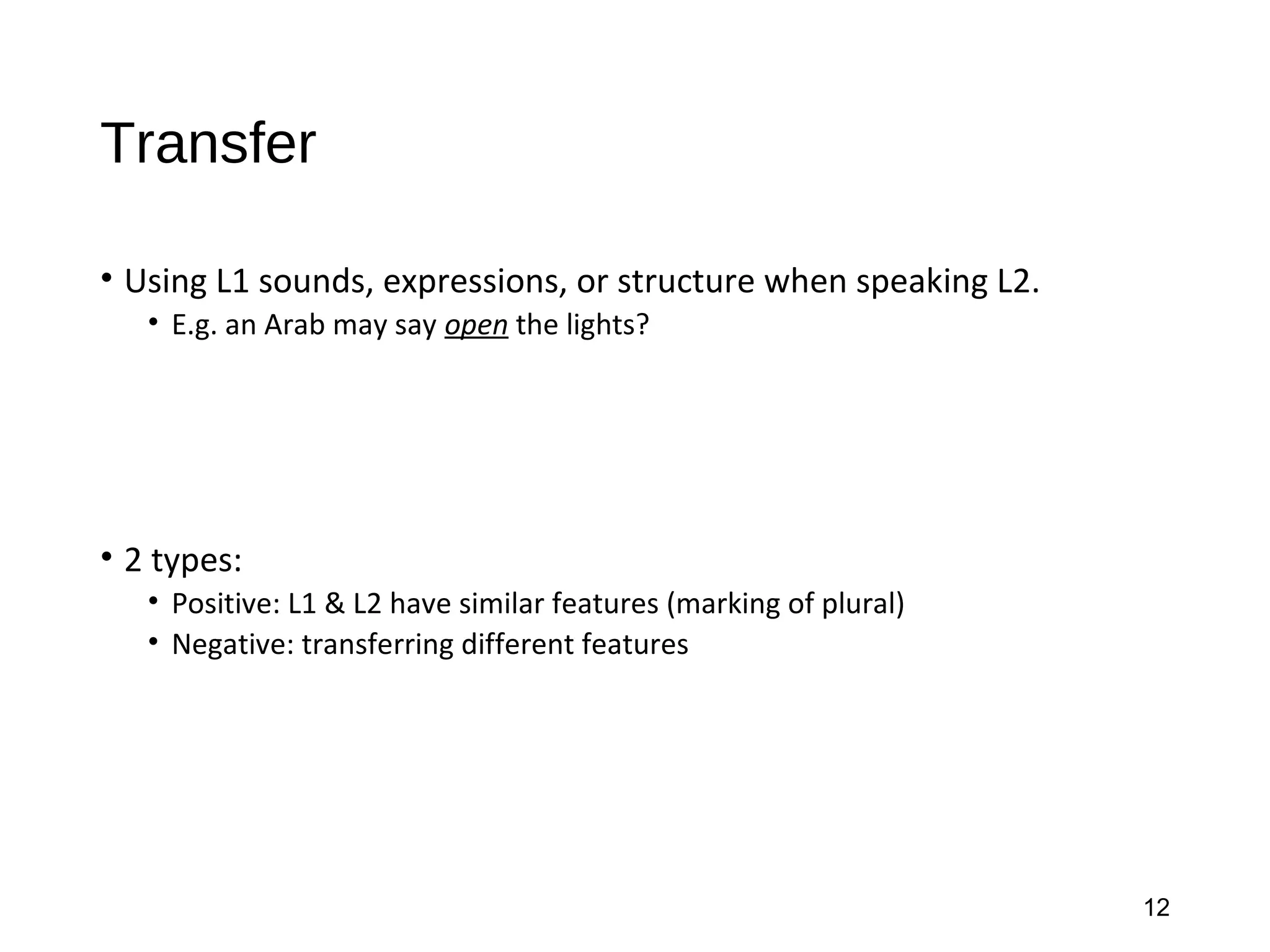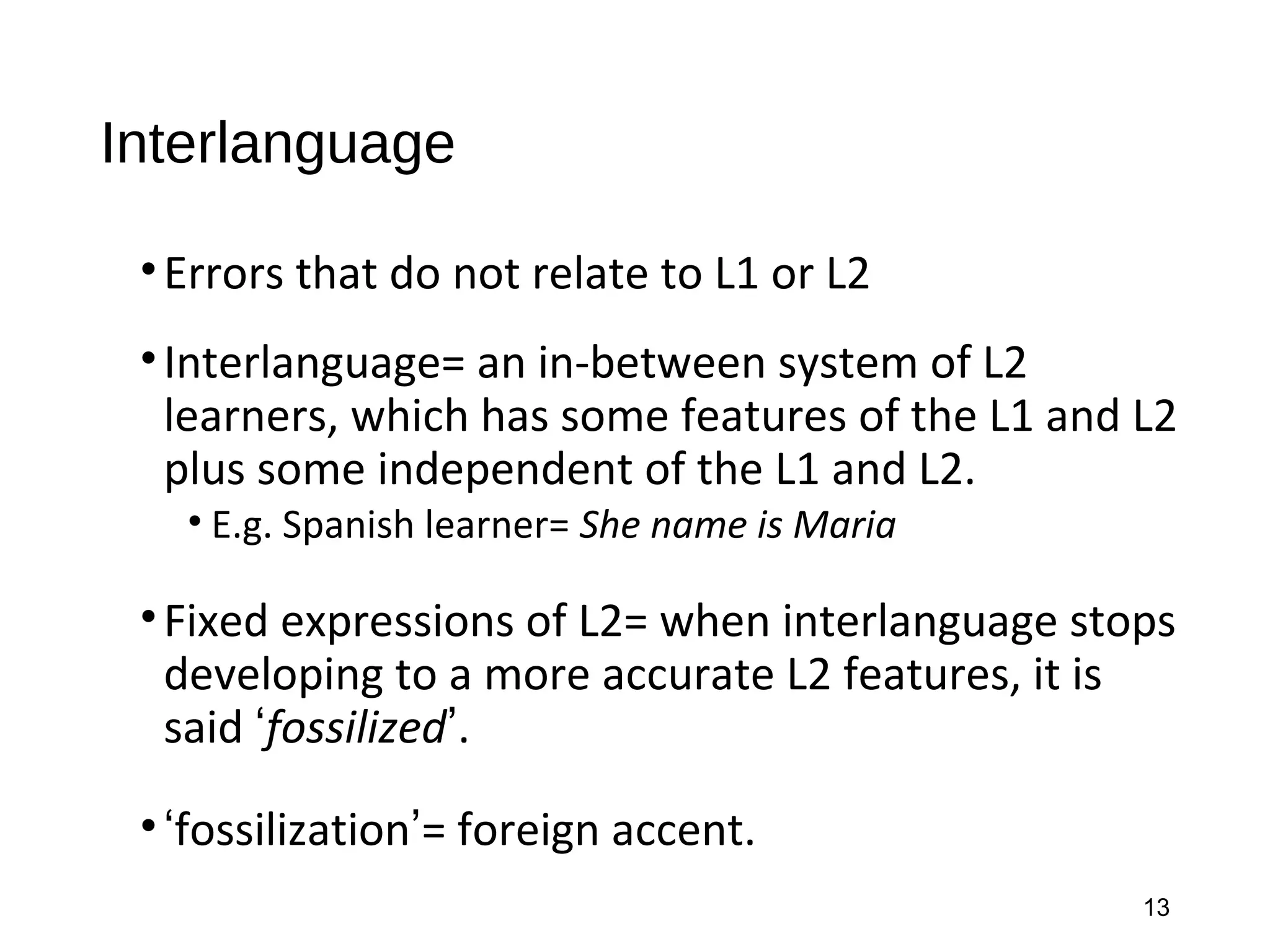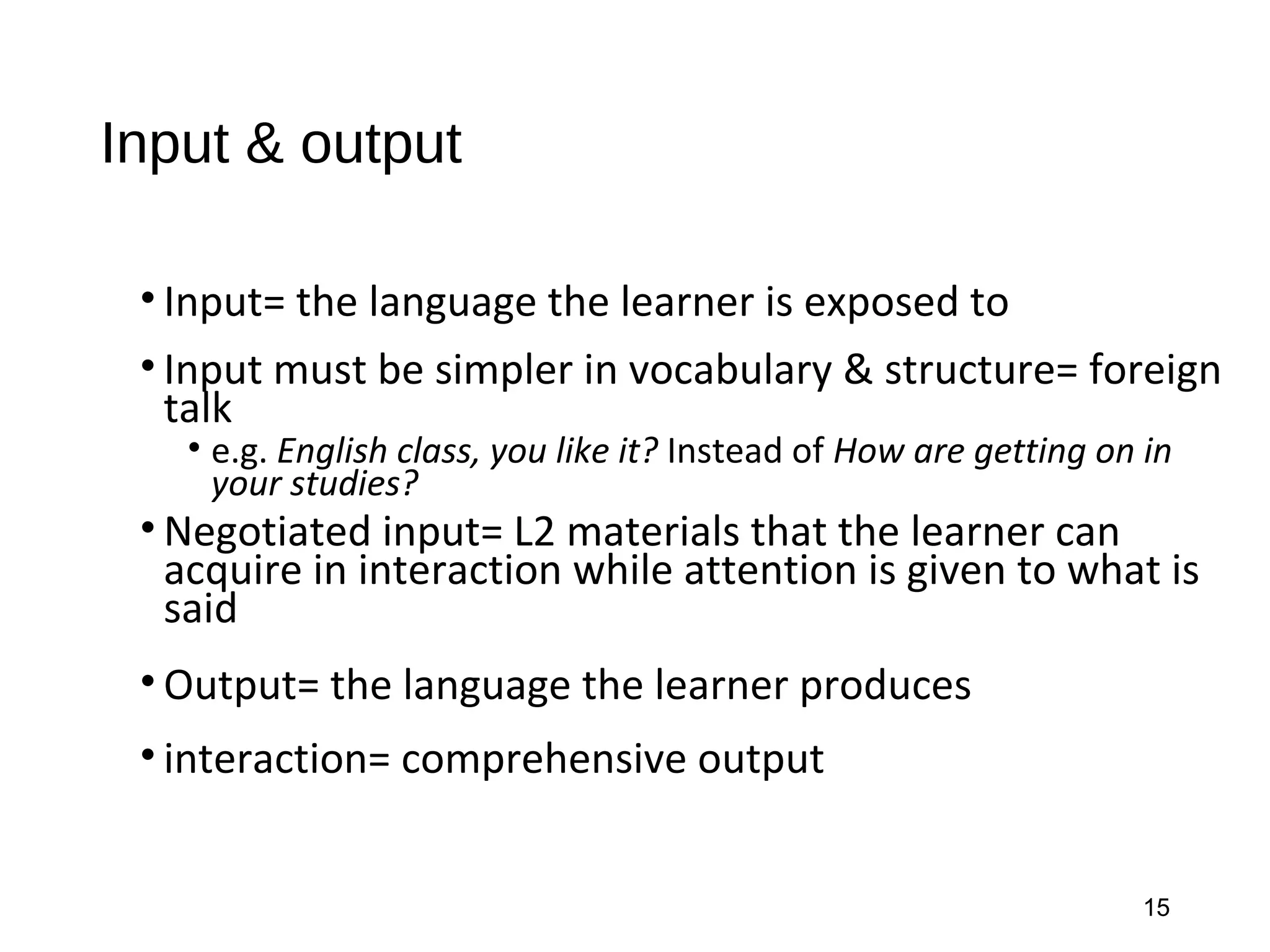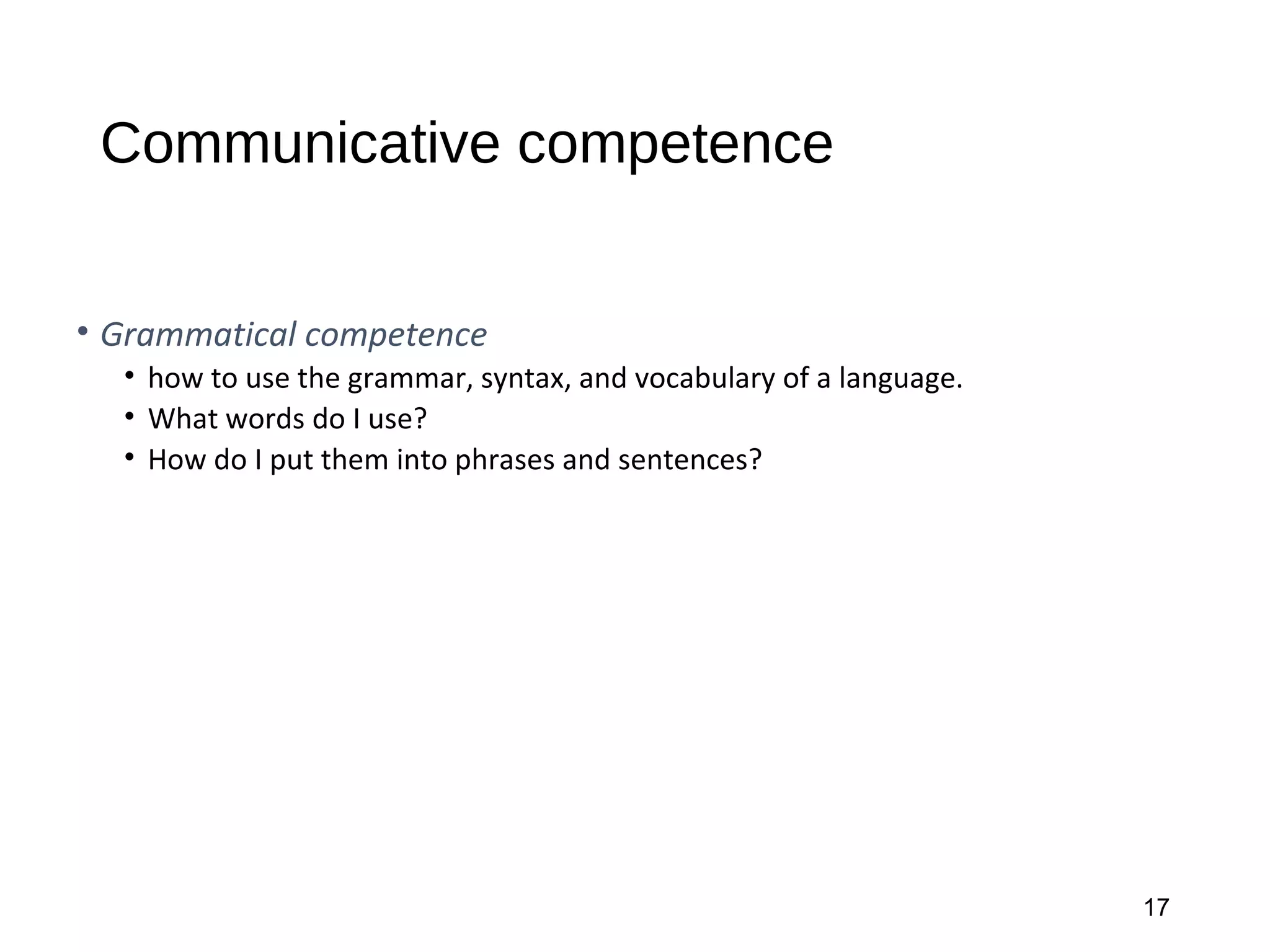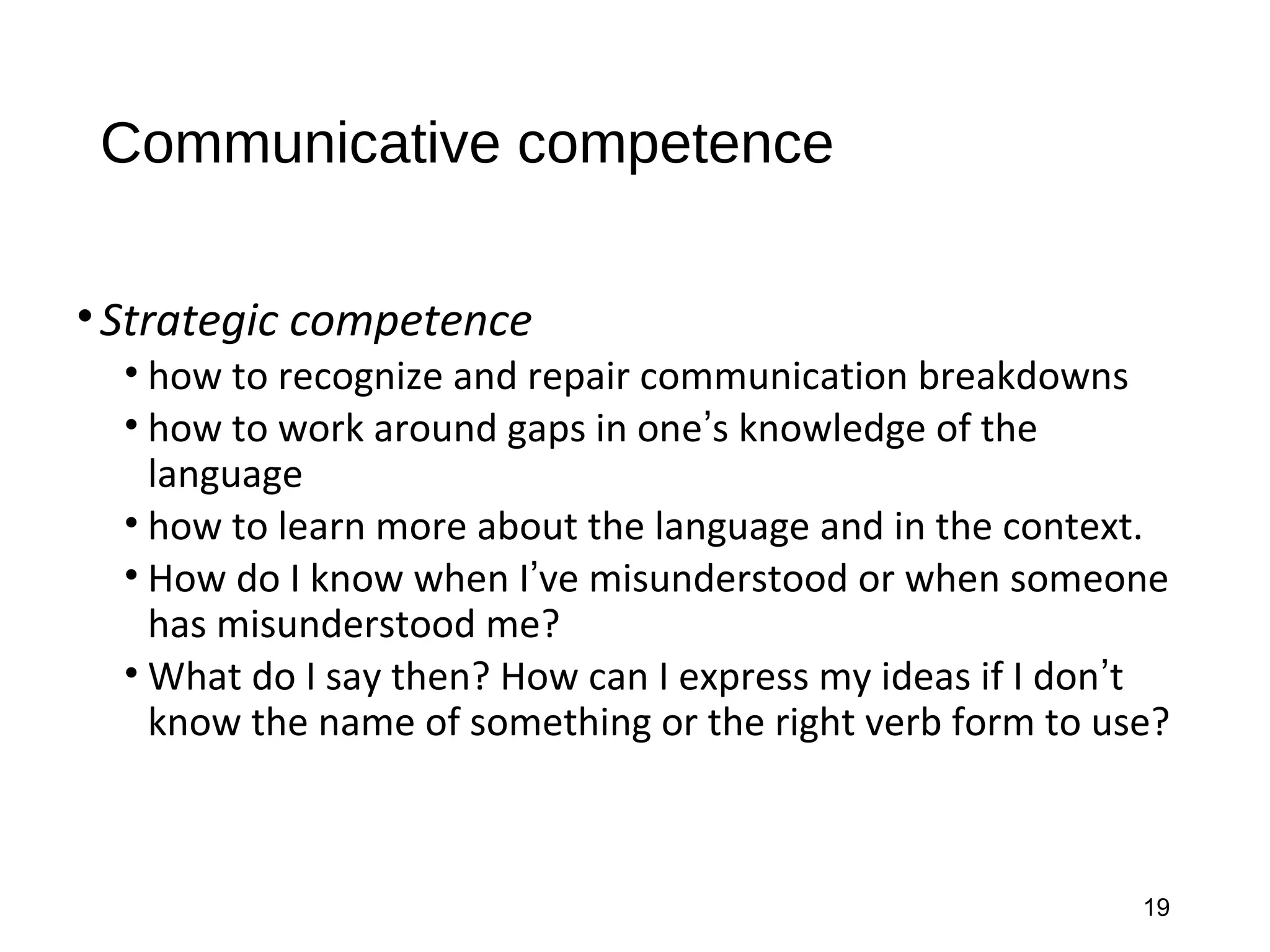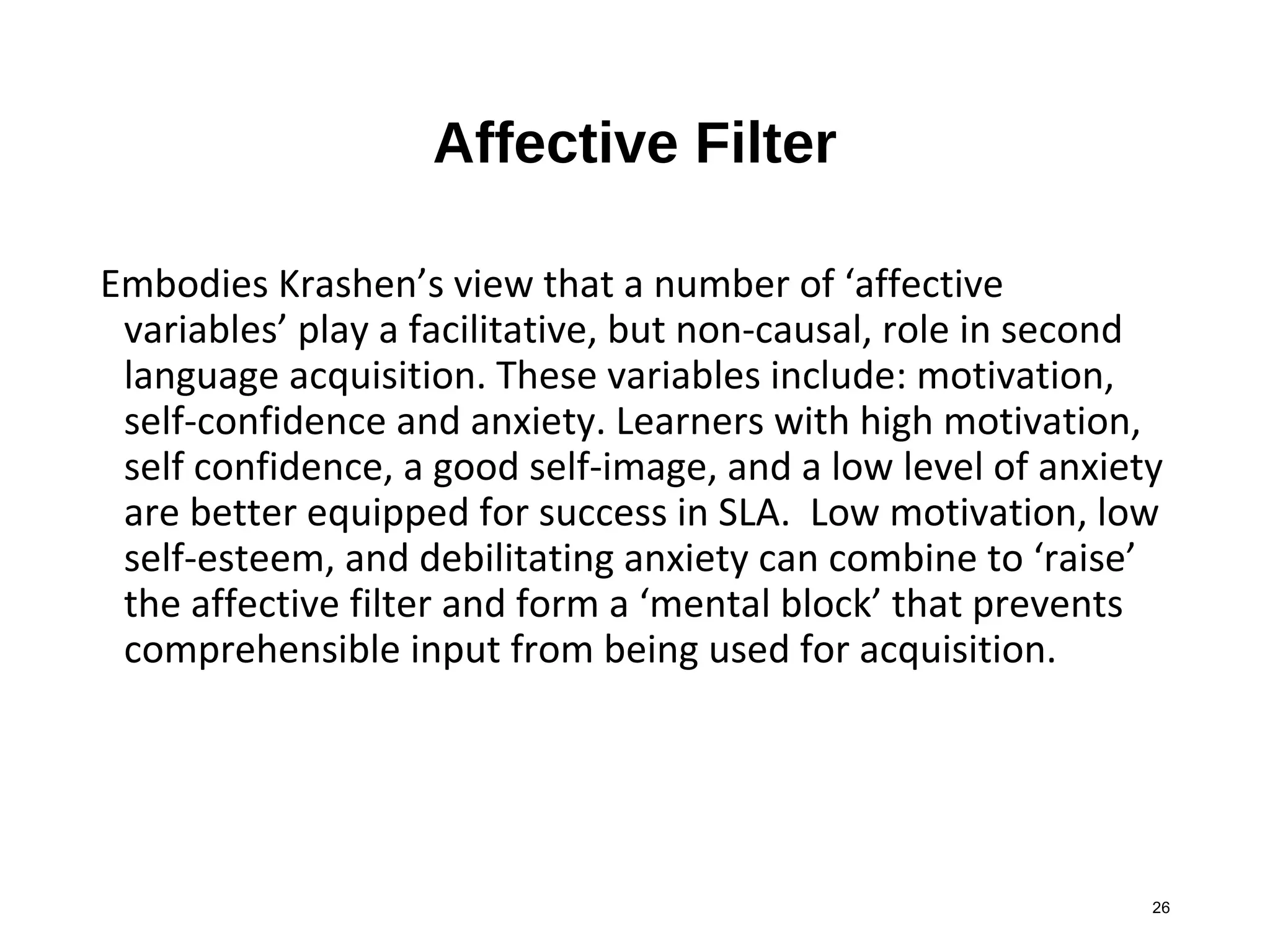This document discusses several key topics in second language acquisition:
- Children acquire their first language effortlessly while learning a second language as an adult is more difficult due to factors like less constant interaction and influence from the first language.
- There is debate around the existence of a "critical period" for acquiring native-like proficiency in a second language. Affective factors like embarrassment can also influence second language learning.
- Krashen's theory of second language acquisition includes the concepts of acquisition vs learning, the Monitor Hypothesis, the Natural Order Hypothesis, the Input Hypothesis, and the Affective Filter hypothesis.
